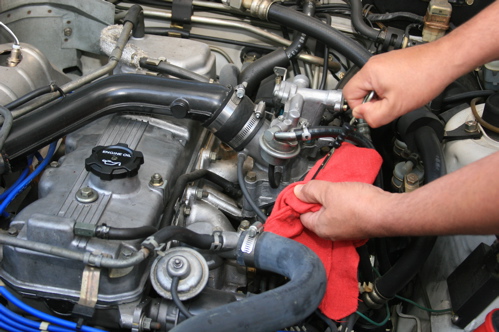 Early horseless carriages had no oil containment system whatsoever. These contraptions deposited used oil directly onto the ground as drivers twirled handlebar mustaches. Modern automobiles boast completely self-contained oiling systems, but still require that the driver check the level every now and again to prevent the engine from tearing itself up.
Early horseless carriages had no oil containment system whatsoever. These contraptions deposited used oil directly onto the ground as drivers twirled handlebar mustaches. Modern automobiles boast completely self-contained oiling systems, but still require that the driver check the level every now and again to prevent the engine from tearing itself up.
Of all the fluids contained in an automobile, oil is absolutely crucial to the survival of your engine. A thin layer of oil molecules rides between moving internal engine parts. These molecules prevent heat-producing friction from destroying your engine in short order. Keeping an eye on your engine oil level is as important as it is simple. Read on to see how.
How to check your oil begins with an understanding of the oiling system. Bolted to the underside of the engine is an oil pan. At the bottom of the oil pan there is a pickup for the oil pump. The pump circulates oil from the bottom of the pan and through the engine. Any loss of oil pressure is instant bad news for the engine.
Every vehicle has a dipstick for checking oil that lives up to its name and dips into the oil pan itself. On the bottom of the dipstick are two marks. The upper mark indicates full. The lower mark indicates add. Since the dipstick only reads how much oil is in the pan itself there are a few rules to follow when checking your oil.
The first rule is that you check the oil while the vehicle is on level ground. The oil dipstick extends down into the engine oil pan, so it cannot give a correct reading if the oil is gathered at the back, front, or side of the pan. The second rule is to wait long enough for oil to drain back into the pan before checking. A couple of minutes should be enough.
The ongoing argument is whether to check your oil when the engine is hot, or when the engine is cold. The cold crowd will argue that when the engine is cold and at rest, all the oil is in the pan, and therefore the dipstick will tell the truth. The hot crowd will argue that oil expands when hot, so the best time to check the oil is when the engine is warm.
Both crowds are right. As long as the first two rules are adhered to everything should be fine. If your driveway at home is nice and flat then check your oil in the morning. If you live and park on a steep hill then check your oil at the gas station when the engine is warm. Hot or cold, every other fill-up is a good schedule for oil checks.
Lastly, there is the reading of the dipstick itself. As a general rule, add one quart of only if the dipstick reads below the add mark. Consult your owners or service manual for motor oil type and viscosity. Pour oil only where it belongs. Engine oil filler caps are usually labeled with the word OIL and often include a pictogram of what looks like Aladdin’s lamp. Find the lamp under the hood before the one on the dash lights up.
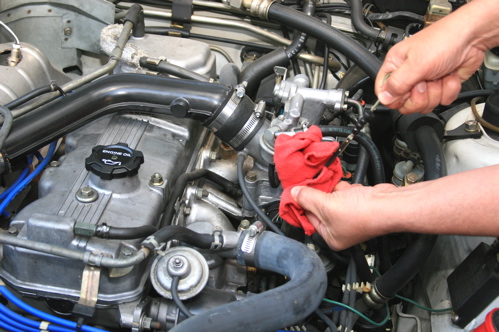

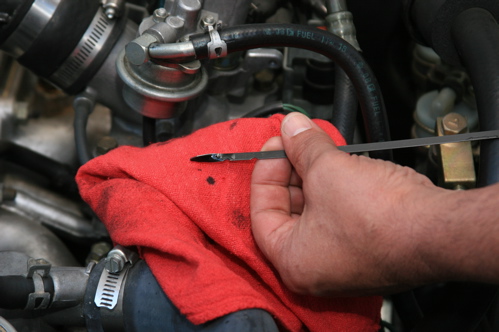
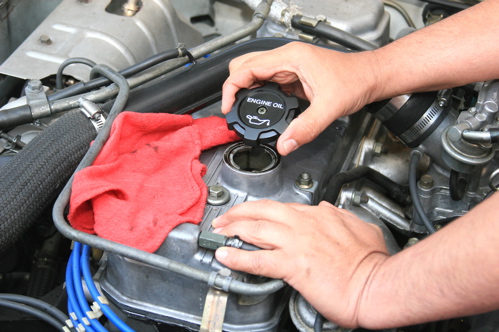

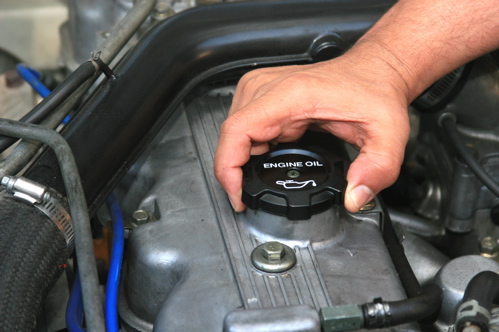
Hey there Clunkbucketeers, good on ya from New Zealand, where even the sheep know how to check their oil.
I’d just like to add that the oil will be less viscous (more runny) when it’s hot, so will drain into the pan (sump!) more quickly. With this in mind, if you normally park on a slope, make sure the engine’s warmed up before you check it.
Chevron Delo 400 15w40 oil in that engine? I’m not sure if that’s such a great idea. Good oil yes, but for a diesel engine, not so much a psycho g54bt. I’m just going to guess that is a transfer container for some other oil .Other wise that will probably use quite a bit, seeing that Delo is designed for engines that produce diesel soot and are “redlined” at three grand. That motor in the Starion would look even more beautiful with a valve cover that has Mitsubishi script along with the diamond star right on the rear center . [a few of those in the garage – ed] You can find them on a handful of the 84-86? Caravans, Voyagers and Ram vans,( well hell maybe even a LeBaron or a 600 I suppose) before Mitsu sold Chrysler the 3.0L V6 engines that replaced the nervous 2.6L hemi.